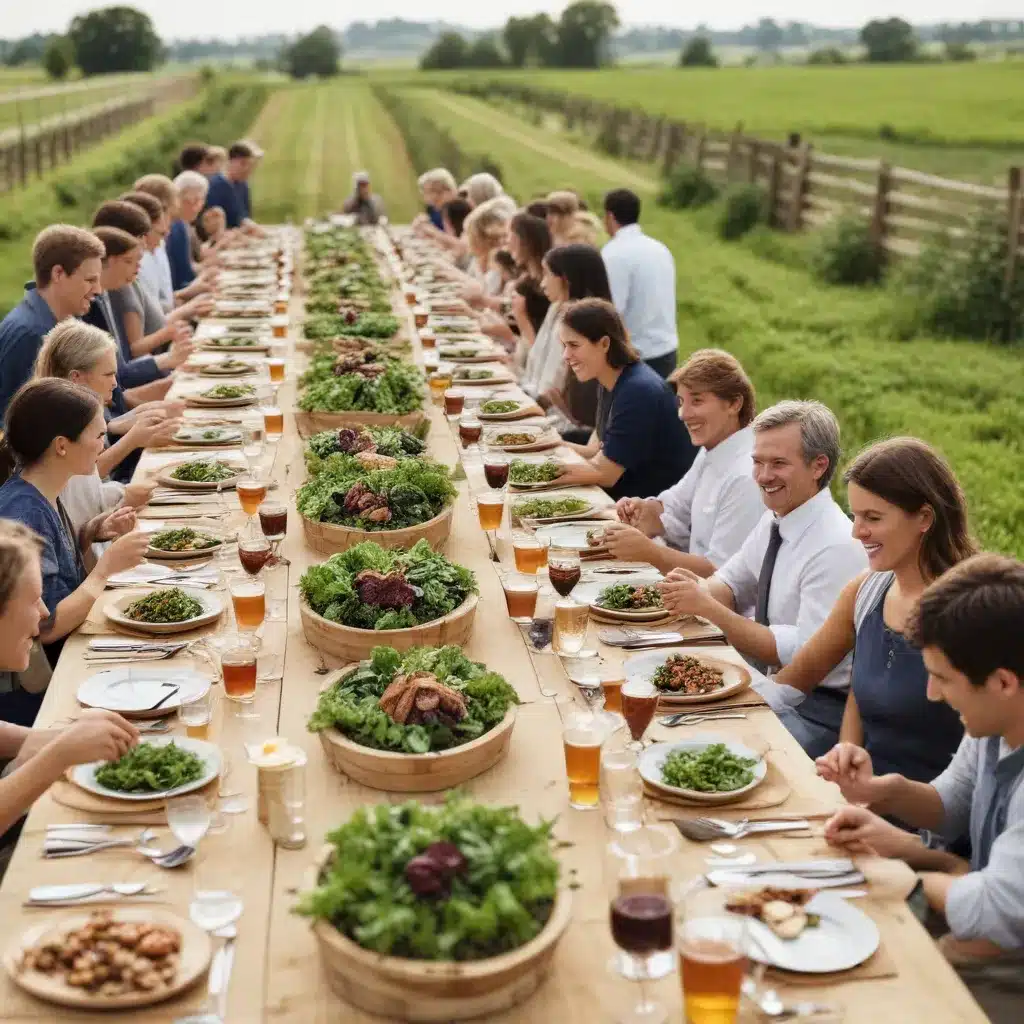
As a seasoned California chef with decades of experience in fine dining, I’ve witnessed the evolution of the farm-to-table movement firsthand. What began as a niche philosophy has now become a culinary mainstay, transforming the way we source, prepare, and appreciate our food. However, the true potential of this movement extends far beyond the mere buzzwords of “local” and “sustainable.” In this article, I’ll share my unique insights on how we can elevate the farm-to-table approach to create a more resilient, equitable, and flavorful food system.
Redefining the Farm-to-Table Ethos
When I first started out in the industry, the farm-to-table concept was often viewed as a marketing gimmick – a way for restaurants to charge a premium for “local” ingredients. But over the years, I’ve come to see it as so much more than that. At its core, the farm-to-table movement represents a fundamental shift in the way we think about food and its origins.
It’s not just about sourcing ingredients from nearby producers; it’s about forging direct, collaborative relationships between chefs and growers. By cutting out the middlemen, we’re able to ensure fair compensation for our farmer partners and a deeper connection to the land that nurtures our ingredients. This, in turn, fosters a more sustainable and resilient food system that benefits both the culinary community and the surrounding economy.
Embracing Whole-Farm Eating
One of the key revelations I’ve had in my culinary journey is the importance of looking beyond the “cream of the crop” when it comes to farm-to-table sourcing. While it’s certainly important to celebrate the seasons’ best offerings, we must also recognize the vital role that so-called “lesser” ingredients play in supporting the health and diversity of our agricultural landscape.
Take, for example, the humble buckwheat or barley. These unsung heroes of the grain world not only contribute unique flavors and textures to our dishes, but they also play a crucial role in building soil fertility and supporting crop rotations. By incorporating these soil-building crops into our menus, we’re not just showcasing delicious ingredients – we’re actively participating in the regeneration of our food system.
Redefining the Gourmet Experience
This shift towards whole-farm eating has also challenged me to rethink the very definition of “gourmet” cuisine. In the past, I’ll admit, I was quick to gravitate towards the most visually appealing and “Instagram-worthy” ingredients – the ones that would dazzle my diners and earn me accolades.
But as I’ve delved deeper into the farm-to-table philosophy, I’ve come to realize that true culinary greatness lies in celebrating the often-overlooked elements of the farm. Take, for example, the humble cattail. These aquatic plants, with their delicate, asparagus-like flavor, are not typically associated with fine dining. Yet, when presented with care and creativity, they can become the star of the show, introducing diners to the wonders of their local ecosystem.
Empowering the Chef as Agent of Change
As chefs, we have a unique opportunity to shape the cultural narrative around food and its origins. By embracing a whole-farm approach and championing the use of diverse, lesser-known ingredients, we can not only delight our guests with exceptional flavors but also educate them on the importance of supporting a more sustainable and equitable food system.
I’ve seen this firsthand at my own restaurants, Blue Hill and Blue Hill at Stone Barns, where we’ve worked tirelessly to forge strong partnerships with local farmers and foragers. By sharing their stories and the provenance of our ingredients, we’re able to engage our diners on a deeper level, instilling a sense of curiosity and appreciation for the hard work that goes into cultivating our food.
Bridging the Gap Between Farmer and Chef
Of course, this journey hasn’t been without its challenges. Sourcing a diverse array of ingredients from local producers can be logistically complex, and there’s often resistance from diners who are more comfortable with the familiar offerings of mainstream cuisine.
But by persevering and continuing to push the boundaries of what constitutes “gourmet” dining, we can help to bridge the gap between farmer and chef. It’s about more than just serving delicious meals – it’s about creating a collaborative ecosystem where growers and culinary professionals work hand-in-hand to shape the future of our food system.
Conclusion: The Road Ahead
As I look to the future of the farm-to-table movement, I’m filled with a sense of cautious optimism. While there’s still work to be done in terms of overcoming the various obstacles we face, I believe that the tide is turning. Consumers are becoming increasingly conscious of the environmental and social implications of their food choices, and they’re seeking out restaurants and chefs who are committed to sustainable, ethical practices.
By continuing to champion the use of diverse, locally sourced ingredients and forging deeper connections with our agricultural partners, we can elevate the farm-to-table ethos to new heights. It’s not just about serving the best-looking produce; it’s about celebrating the entire farm, from the soil-building crops to the less-celebrated cuts of meat. It’s about creating a culinary experience that nourishes both the body and the soul, while also contributing to the health and resilience of our local food systems.
So, let’s raise a glass to the future of California cuisine – one that embraces the full spectrum of the farm and redefines what it means to dine with a difference.

